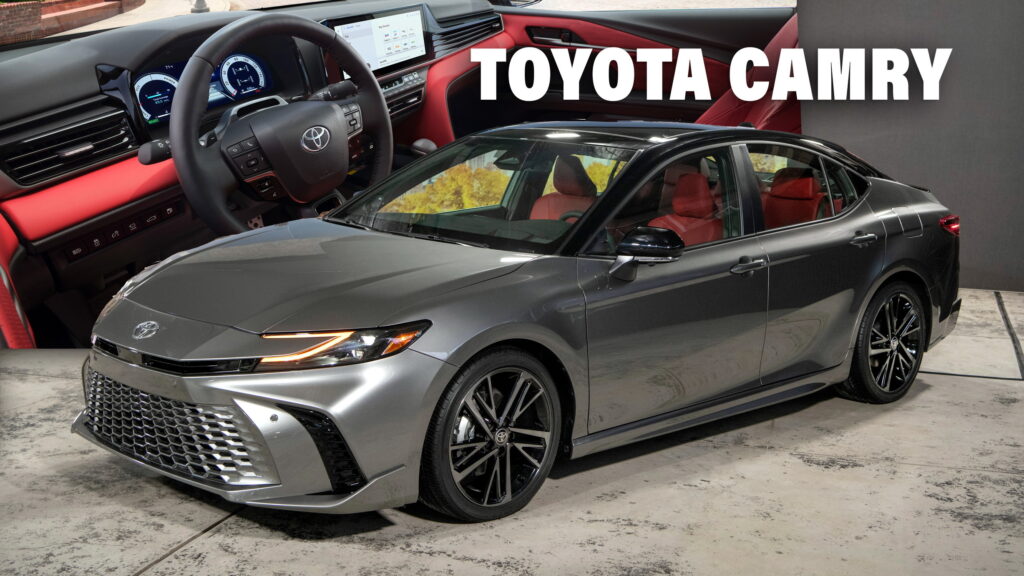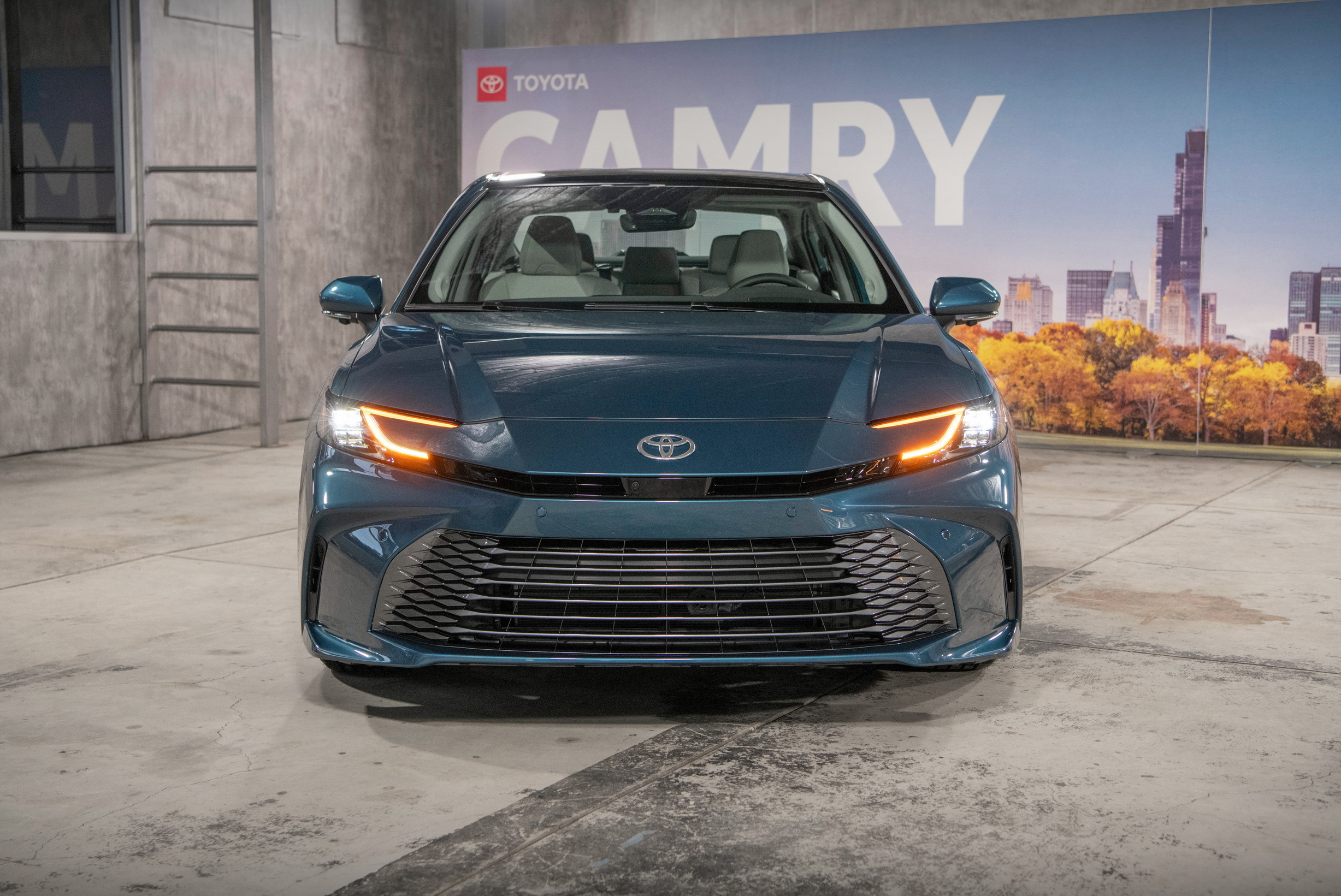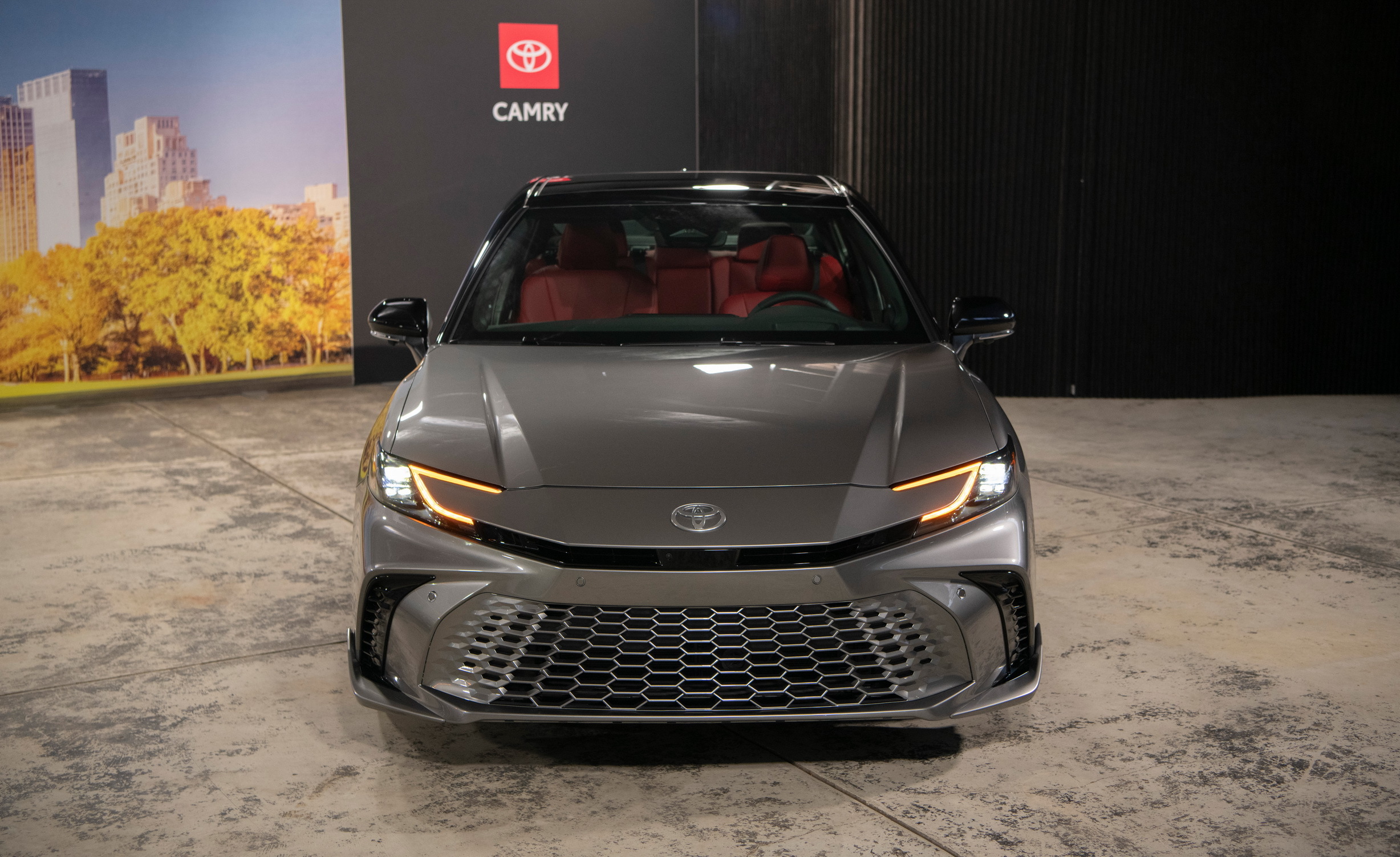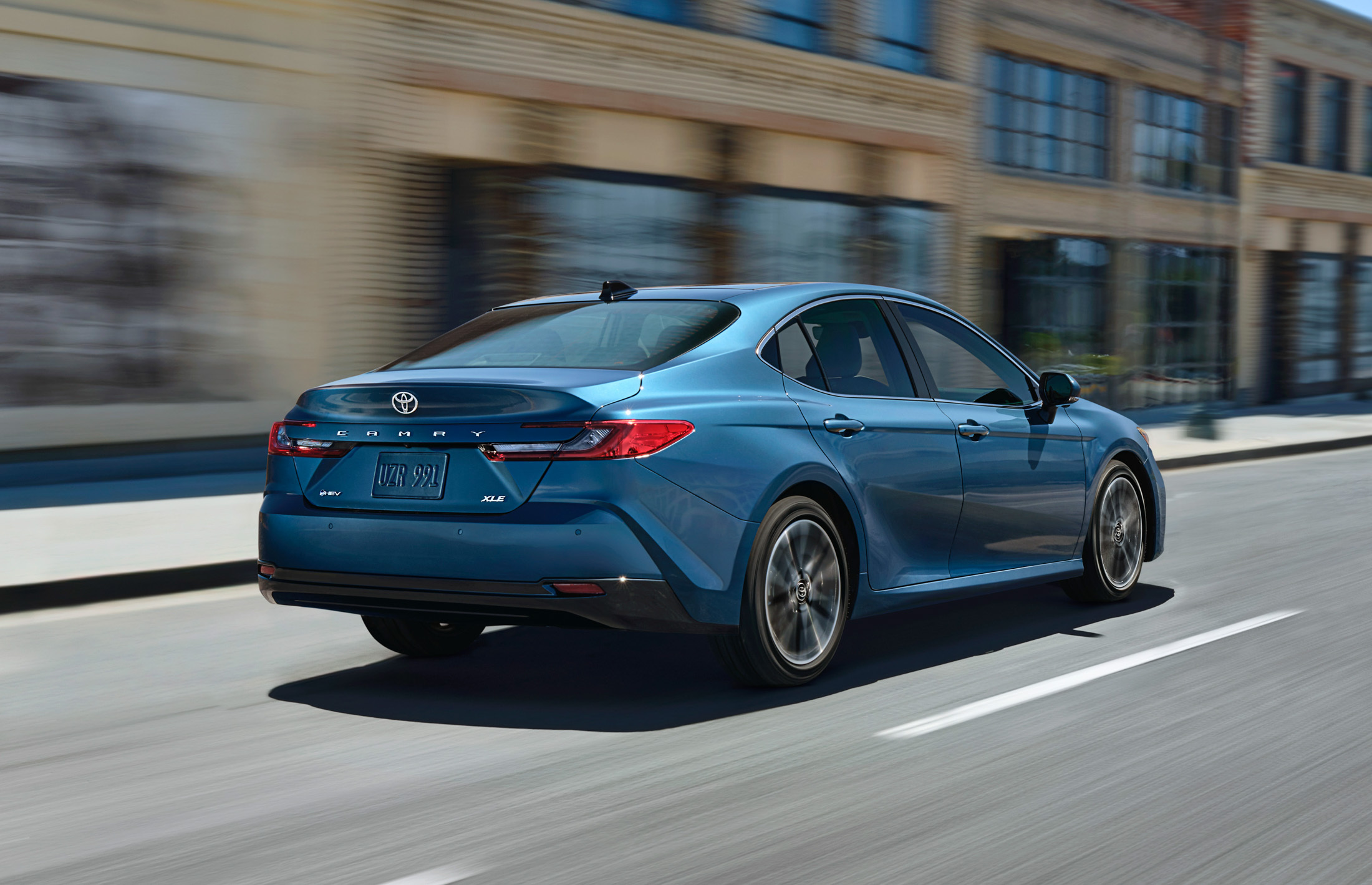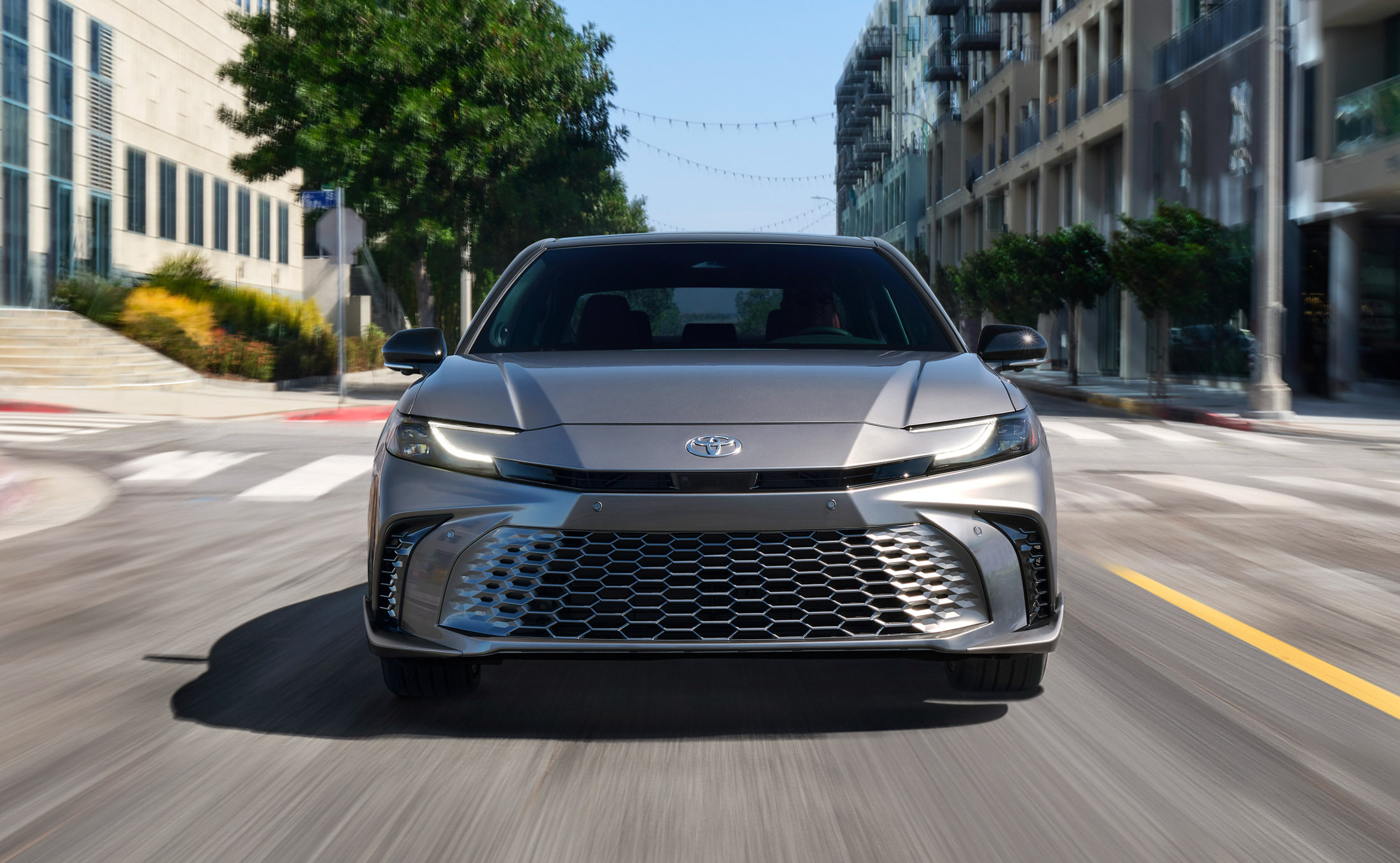Think sedans are dead? Tell that to the Toyota Camry, America’s favorite three-box family car, which was the fifth-best-selling vehicle in the U.S. last year, and the most bought thing on four wheels that wasn’t a truck or SUV.
With that success in mind, it’s understandable that the new 2025 Camry doesn’t start from scratch. It’s a heavily facelifted version of the old sedan, but one with enough new content that should keep the tills ringing at Toyota dealers.
The big Camry news for 2025 is that the mid-size sedan is going hybrid-only, and that the hybrid system is no longer restricted to front-wheel drive models. Both the front-drivers and the AWD cars use the same basic 2.5-liter inline-four, augmented by two electric motors, but while the front-wheel drive version generates a combined 225 hp (228 PS), the all-wheel drive car makes 232 hp (235 PS). The all-paw Camry is, in fact, nominally front-wheel drive, the AWD capability coming from a third, rear-mounted electric motor that chimes in when needed.
More: 2025 Toyota Crown Signia Is The Mid-Size SUV That Wagons Its Own Way
Toyota hasn’t revealed full details for the new engines, but it does say the hybrid system has been tuned to reduce engine revs, which ought to minimize some of that annoying mooing you normally get from Toyota and Lexus hybrids due to their continuously variable transmissions.
What of the meaty 301 hp (305 PS) V6 in the current car, you ask? There’s no sign of it, and maybe it won’t be missed, given that Toyota told us only 7 percent of Camrys sold so far this year have been equipped with the lusty 3.5-liter engine. By the same token, it’s interesting to note that only 11 percent of current buyers opt for the hybrid, while 82 percent take the straight gas motor. But there’s another good reason for ditching the V6, and it’s to put space between the Camry and Crown, which is more expensive, but only available with a four-cylinder.
Crown And Prius Influences
Unlike the Crown, America’s preferred sedan sticks to America’s preferred sedan format. As a result, the Camry has a traditional ride height and no plastic cladding.
However, there are some Crown influences. You can see it in the nose, which is like a fusion of the snouts on the Crown and Prius, and also in the design of the interior, which isn’t lifted directly from the Crown, but does bear an uncanny resemblance.
All grades get keyless start, dual-zone climate control, a wireless phone charger, and a comprehensive safety package that includes blind-spot monitoring as well as rear cross-traffic alert. But while the LE and its SE brother settle for a 7-inch digital gauge cluster and an 8-inch touchscreen, the XLE and XSE get two 12.3-inch displays.
The SE shows its sporty side with aluminum pedals, paddle shifters, a black mesh grille, and canards on the front bumper. They’re joined by a body-color spoiler, a rear diffuser, a dual-tip exhaust, and a firmer suspension setup. The XSE goes a step further with 19-inch wheels, heated leather seats, acoustic glass, ambient lighting and smart-key access. If you want all the luxury stuff from the XSE, but think canards and spoilers are best left on the racetrack, the XLE is the car for you.
The Days Of The Sub-$30k Camry Could Be Over
The 2025 Camry should arrive at Toyota dealers in the spring of 2024 and pricing will be announced closer to launch. However, a price increase seems inevitable, especially since hybrid power now comes standard.
While that remains to be seen, the standard Camry, which accounted for 82 percent of sales, starts at $26,420. The hybrid, on the other hand, begins at $28,855 and the new model could be even more expensive.
With all that being said, what do you think of the new Camry? Has Toyota done enough to keep the six-year old sedan on top for years to come? Leave a comment and let us know.




